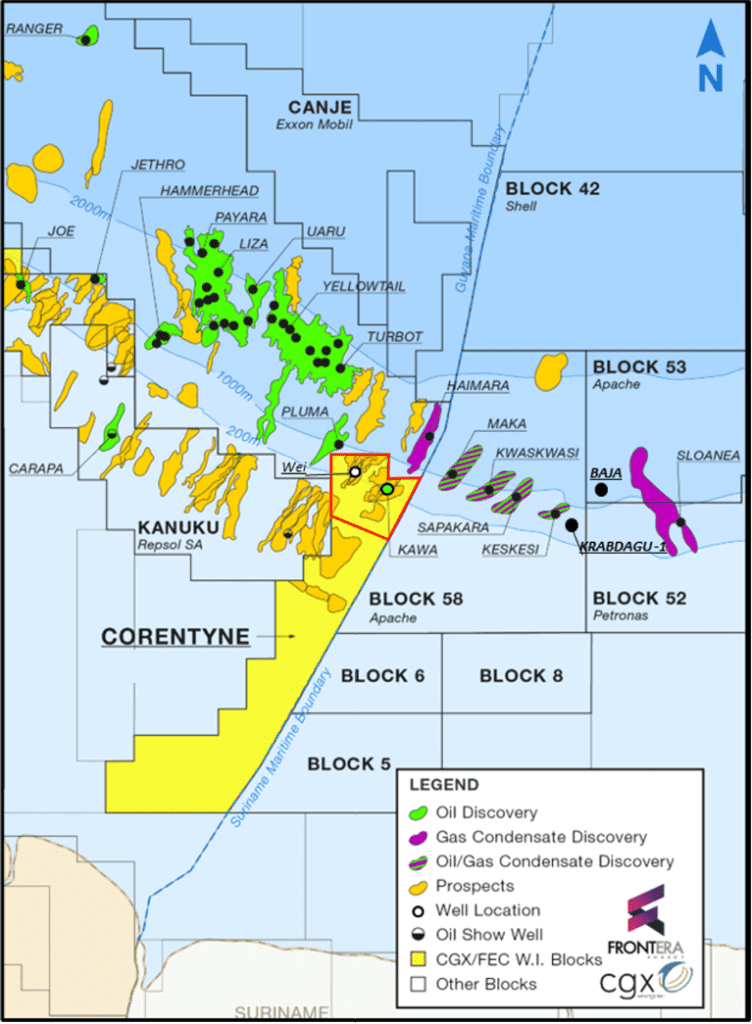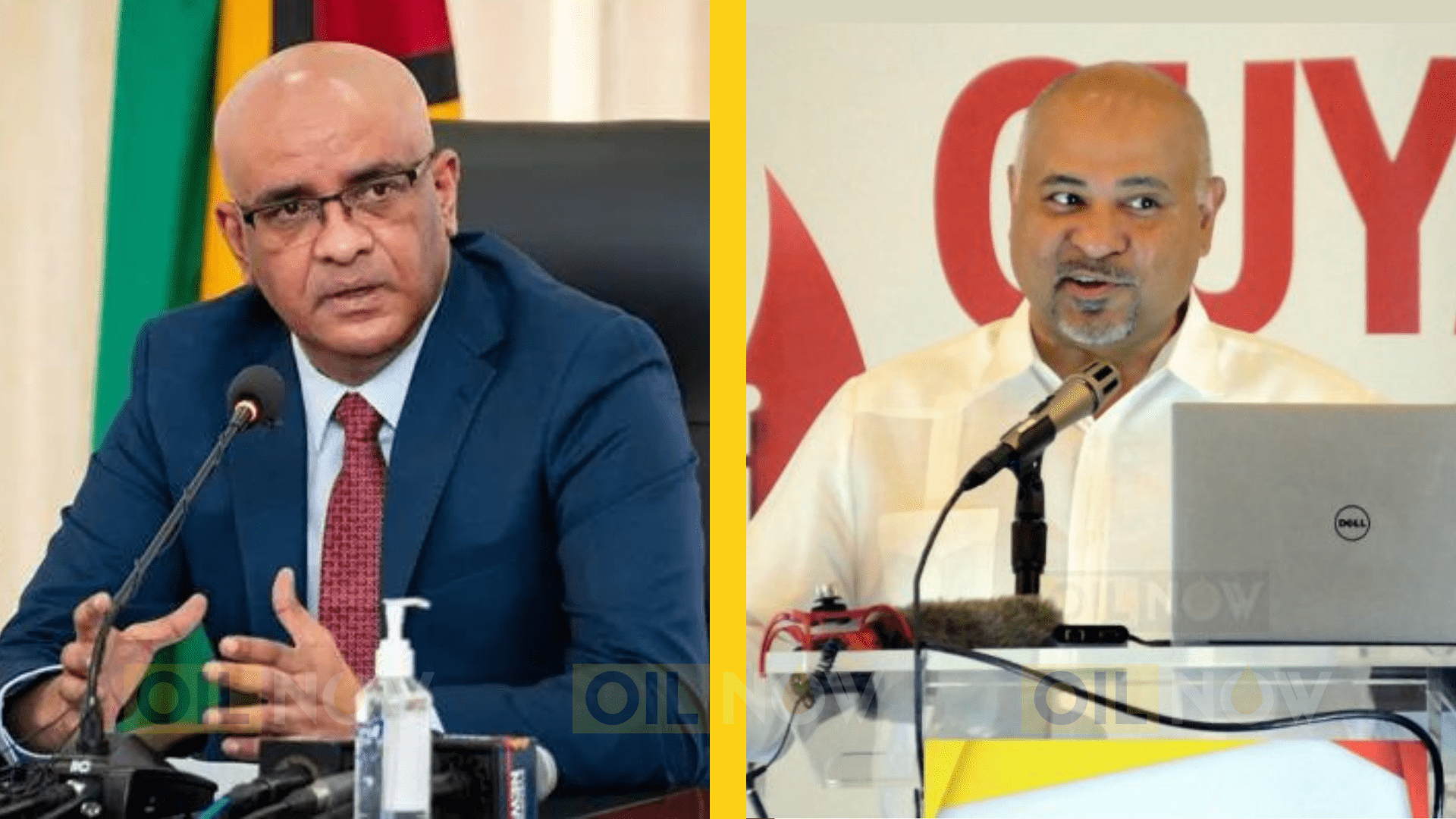Guyana’s Vice President Bharrat Jagdeo said Thursday that the government is not inclined to grant an extension sought by CGX Energy for its Corentyne Block license.
“[The application] went to the Cabinet [of Ministers] today. There were discussions. The Cabinet is not inclined to grant… the continuation of the license,” Jagdeo said at a press conference on Thursday.
However, the matter is still under consideration.
CGX’s exploration license has come to an end, which would require the return of the Corentyne Block to the government. However, CGX filed a notice of potential commercial interest in the second of its two discoveries in the license area. If accepted, it would give the company and its joint venture partner, Frontera Energy, more time to appraise the discovery made at the Wei-1 well and determine its commerciality.
Minister of Natural Resources, Vickram Bharrat, had met with CGX following the submission of its notice and did not consider the company’s justifications satisfactory, Jagdeo relayed last week.
A week before that, Jagdeo expressed skepticism about CGX’s application. “I should not be so blunt but I am blunt about this now. We have given them time to – as per the law, to do all they had to do but this is the crunch time now,” he said.
The Vice President said CGX “will not play” the government.
This is not the first time CGX submitted a notice of potential commercial interest in a discovery. When its license period was due to run out in 2022, the company sought an extension, claiming potential commercial interest in the Kawa-1 discovery. It had made plans to drill the Wei-1 well but had delays and needed the extra time. The company had to relinquish most of the block’s original acreage, only keeping the area of interest.
Drilling at Wei-1 resulted in a discovery announced in June 2023. However, the rollout of additional information about the find five months later saw the stock values of CGX and Frontera plunge. Editor-in-Chief at GEO ExPro, Henk Kombrink, mentioned the ordeal in a March article, questioning why companies would announce a discovery when the actual proof is not there. CGX and Frontera, Kombrink said, had to explain to investors that the announcement of a significant hydrocarbon-bearing Santonian sandstone interval did not equal a similarly thick pay zone.
By the end of the first extension period, commercial interest in the discovery did not materialize; hence, the application for another extension.
CGX said too that a study revealed an estimated prospective resource in the Maastrichtian of between 514 and 628 million barrels of oil equivalent. The company announced that it could start oil production by 2030, but detailed no plans for additional drilling to prove the resource. Recent financial reports indicated it does not have the money to do so.
CGX and Frontera have sought strategic options, such as a potential farm-down of their Corentyne stakes, to alleviate the burden of CGX’s financial position. Frontera has, for some time, substantially footed CGX’s expenses in meeting obligations under their shared license, so much that it is now a majority shareholder in both the Corentyne Block and CGX Energy Inc.
As of July 25, CGX Energy Inc. traded at approximately CA$0.25 per share on the TSX Venture Exchange, even lower than it was when it plunged in November last year.




